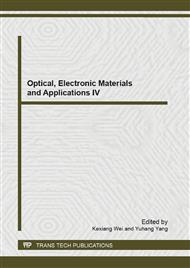p.180
p.187
p.194
p.198
p.202
p.207
p.212
p.217
p.223
Study of Analysis Method on Electromagnetic Disturbance for Moving Targets
Abstract:
Nowadays the electromagnetic disturbance analysis bases on the assumption that the target is static and has no Interaction with the Rough background. But the fact is that the target is moving and has interaction with the rough background. This paper gives a method about how to study the complicated moving target modeling technology in the condition of random disturbance and the uncertain effect. The innovative point of this paper is that solve the double Doppler Effect come from the inaccuracy of solitary electromagnetic scattering modeling and moving target.
Info:
Periodical:
Pages:
202-206
Citation:
Online since:
July 2013
Authors:
Price:
Сopyright:
© 2013 Trans Tech Publications Ltd. All Rights Reserved
Share:
Citation:


